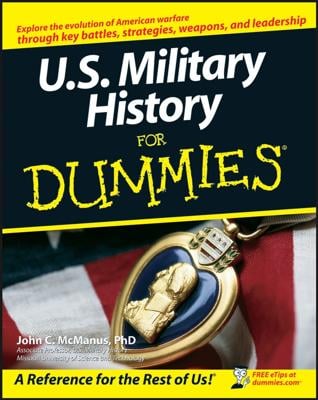In the early years at least, probably as few as a third of Americans supported the revolution. About 20 percent, called loyalists or Tories after the ruling political party in Britain, were loyal to the crown, and the rest didn’t care much one way or another.
Because they weren’t professional soldiers, many of those who fought in the American army had peculiar notions of soldiering. They often elected their officers, and when the officers gave orders they didn’t like, they just elected new ones.
The soldiers signed up for a year or two, and when their time was up, they simply went home, no matter how the war — or even the battle — was going. At one point, the colonial army under George Washington was down to 3,000 soldiers. They also weren’t big on sticking around when faced with a British bayonet charge.
Many, if not most, battles ended with the Americans running away, so often that Washington once observed in exasperation that “they run from their own shadows.”
Regional jealousies often surfaced when soldiers from one colony were given orders by officers from another colony, and there was at least one mutiny that had to be put down by other American units. The American soldiers were ill-fed, ill-housed, and so poorly clothed that in some battles, colonial soldiers fought nearly naked.
About 10,000 soldiers spent a bitter winter at Valley Forge, Pennsylvania, literally barefoot in the snow, and about 2,800 of them died. “The long and great sufferings of this army are unexampled in history,” wrote the army’s commander, George Washington.
They were also paid in currency called continentals, which became so worthless the phrase “not worth a continental” became a common American saying for decades after the Revolution. Because the money was so worthless, unpatriotic American merchants often sold their goods to the British army instead, even when American troops wore rags and starved.Others cornered the markets on goods such as food and clothing, stockpiling them until the prices rose higher and higher. As a result, desperate army leaders were forced to confiscate goods from private citizens to survive.
About the best thing the Americans had going for them was a cause, because men who are fighting for something often fight better. Indeed, as the war wore on, the American soldier became more competent. By the end of 1777, a British officer wrote home that “though it was once the tone of this [British] army to treat them in a most contemptible light, they are now become a formidable enemy.”
The fact that there were 13 colonies was also an advantage because it meant there was no single nerve center for which the British could aim. They conquered New York, they took Philadelphia, and still the colonies fought on.
America also had rapid growth in its favor. “Britain, at the expense of 3 million [pounds] has killed 150 Yankees in this campaign, which is 20,000 pounds a head,” observed Ben Franklin early during the fighting. “During the same time, 60,000 children have been born in America.”
But maybe most important, the Americans were lucky enough to choose an extraordinary leader and smart enough to stick with him. Not only that, he looks good on the dollar bill.

